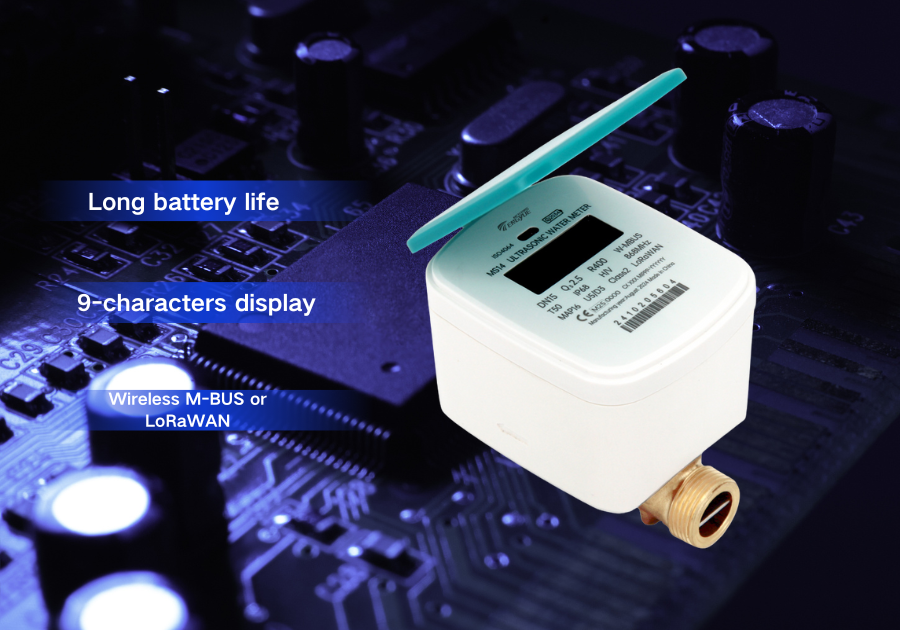Comparison | Mechanical Water Meter | Tengyue Metering’s Ultrasonic Water Meter |
Working Principle | The water flow drives the internal mechanical device to measure the water flow rate. | The ultrasonic water meter calculates the velocity of water by collecting the time difference generated due to the change in speed when sound waves propagate downstream and upstream in the water. It then uses a calculation formula to determine the volume of water flowing through the meter per unit time, thereby obtaining the cumulative flow of water |
Lifespan | 5-8 years | > 8 years |
Water Quality | Mechanical water meters can be affected by mud, impurities, and other contaminants. | No mechanical parts, direct-flow metering pipe section, with minimal impact on water flow and low requirements for water quality. |
Flow Range Ratio | The flow range ratio of a mechanical water meter can reach up to R:250 at most. | The flow range ratio of Tengyue Metering’s ultrasonic water meter can reach R:800, offering high precision and the ability to measure accurately even at low flow rates. |
Data storage | No data retention function. | Automatically saves 23 months of historical data, with the capability to store up to 10 years |
Display content | shows only water usage | The LCD screen displays flow rate, cumulative flow, temperature, date, elapsed time, water meter address, historical data, and more. |
In recent years, ultrasonic water meters have gradually replaced traditional mechanical water meters and are becoming the mainstream of the water meter market. Behind this are the significant advantages of ultrasonic water meters in terms of accuracy, maintenance, and environmental protection.
Smart ultrasonic water meters calculate water flow based on the time it takes for sound waves to travel in water. This avoids mechanical friction and wear in traditional water meters, ensuring more accurate measurements even at low flows (e.g., 4 liters per hour).
One of the biggest advantages of ultrasonic water meters is that there are almost no mechanical moving parts inside them. This means that it will not experience a decrease in accuracy or failure due to wear of gears, dials, or floats, as in traditional mechanical water meters. The application of electronic components and ultrasonic technology makes the structure of ultrasonic water meters simpler and more reliable, greatly reducing the frequency of repairs and maintenance costs, saving users a lot of time and money.
Ultrasonic water meters use non-contact measurement, and the water flow does not need to pass directly through the inside of the water meter, thereby reducing water flow resistance and energy loss. This means that at the same flow rate, ultrasonic water meters are more energy-efficient than mechanical water meters. In addition, its low-power design allows for longer battery life, reduces the frequency of battery replacement, and is more environmentally friendly.
With the continuous advancement of technology, ultrasonic water meters will become more intelligent and integrated, making greater contributions to the development of smart water services.

